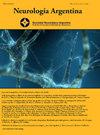Guillain- Barre综合征的预测因素:乌拉圭南部的一项前瞻性研究
Q4 Medicine
引用次数: 0
摘要
背景与目的格林-巴勒综合征(GBS)是一种以急性对称性肌肉无力为特征的免疫介导的周围神经系统疾病。了解其区域流行病学和预后因素对临床管理至关重要。本研究分析了乌拉圭GBS的发病率和预后因素,重点是确定与不良结局和机械通气(MV)需求相关的临床变量。方法对乌拉圭61例GBS患者进行为期2年的前瞻性研究。收集的数据包括人口统计学和临床特征、脑脊液(CSF)蛋白水平和血清学检测。主要结果是预测是否需要MV。次要结果是6个月时的功能恢复,用Hughes量表评估。双变量分析用于评估临床变量、MV要求和结果之间的关系。结果61例患者中,男性38例(62%),中位年龄56岁。39%的患者出现自主神经功能障碍。18例(29%)需要MV,这与自主神经功能障碍、球无力和医学研究委员会(MRC)总评分显著相关。第7天的MRC评分和Erasmus GBS结局量表(mEGOS)与6个月时的较差恢复有关。脑脊液蛋白水平与预后无显著相关性。弯曲杆菌感染低(10%)。结论GBS的流行病学和预后因素的地区差异需要有针对性的临床治疗。自主神经功能障碍和球无力是预测是否需要MV的关键因素。MRC评分为临床预测提供了一个简单的工具。本研究提高了对GBS的认识,指导乌拉圭及类似地区的临床决策。本文章由计算机程序翻译,如有差异,请以英文原文为准。
Factores pronósticos en el síndrome de Guillain-Barré: un estudio prospectivo en el sur de Uruguay
Background and objective
Guillain-Barré Syndrome (GBS) is an immune-mediated disorder of the peripheral nervous system characterized by acute, symmetric muscle weakness. Understanding its regional epidemiology and prognostic factors is crucial for clinical management. This study analyzed the incidence and prognostic factors of GBS in Uruguay, focusing on identifying clinical variables associated with poor outcomes and the need for mechanical ventilation (MV).
Methods
A prospective study was conducted on 61 GBS patients over two years in Uruguay. Data collected included demographic and clinical characteristics, cerebrospinal fluid (CSF) protein levels, and serological tests. The primary outcome was to predict the need for MV. The secondary outcome was functional recovery at 6 months, assessed with the Hughes scale. Bivariate analysis was used to evaluate associations between clinical variables, MV requirement, and outcomes.
Results
Among the 61 cases, 38 (62%) were men, with a median age of 56 years. Autonomic dysfunction was observed in 39% of patients. Eighteen (29%) required MV, which was significantly associated with autonomic dysfunction, bulbar weakness, and the Medical Research Council (MRC) sum score. The MRC score and the Erasmus GBS Outcome Scale (mEGOS) at day 7 were related to worse recovery at 6 months. No significant associations were found between CSF protein levels and outcomes. Campylobacter infection was low (10%).
Conclusions
Regional variations in the epidemiology and prognostic factors of GBS necessitate tailored clinical management. Autonomic dysfunction and bulbar weakness are critical for predicting the need for MV. The MRC score provides a simple tool for prediction in the clinical setting. This study enhances the understanding of GBS and guides clinical decision-making in Uruguay and similar regions.
求助全文
通过发布文献求助,成功后即可免费获取论文全文。
去求助
来源期刊

Neurologia Argentina
Medicine-Neurology (clinical)
CiteScore
0.50
自引率
0.00%
发文量
34
期刊介绍:
Neurología Argentina es la publicación oficial de la Sociedad Neurológica Argentina. Todos los artículos, publicados en español, son sometidos a un proceso de revisión sobre ciego por pares con la finalidad de ofrecer información original, relevante y de alta calidad que abarca todos los aspectos de la Neurología y la Neurociencia.
 求助内容:
求助内容: 应助结果提醒方式:
应助结果提醒方式:


